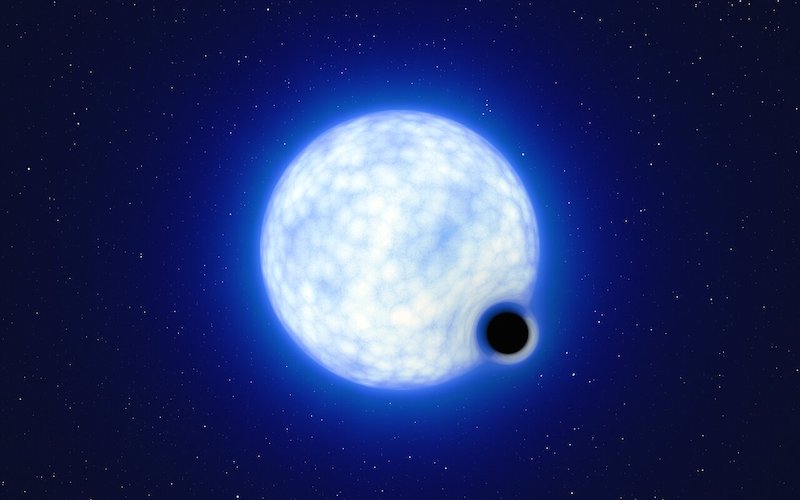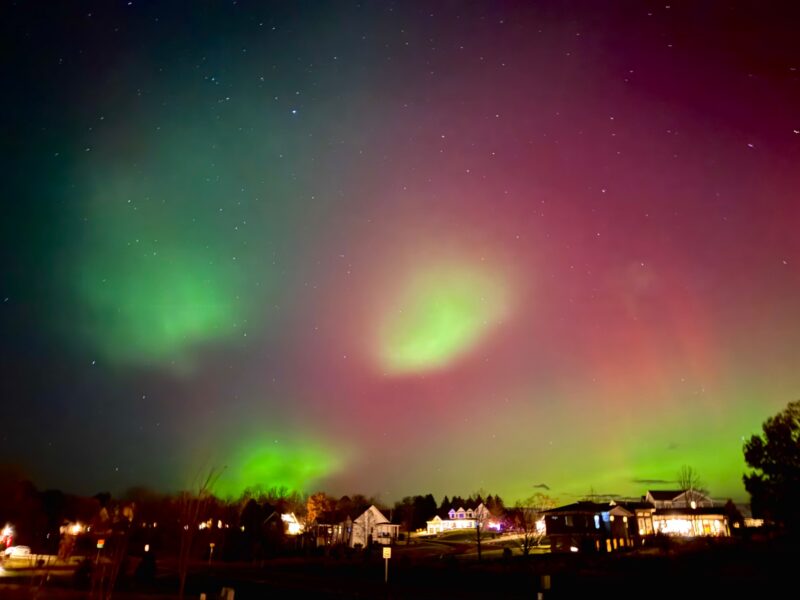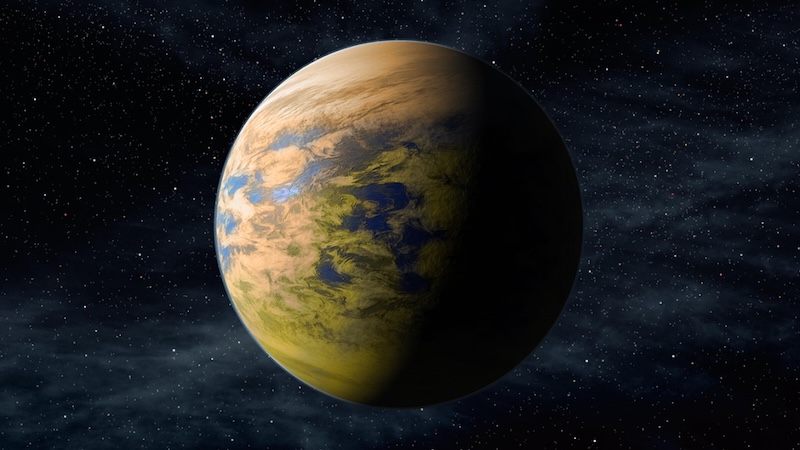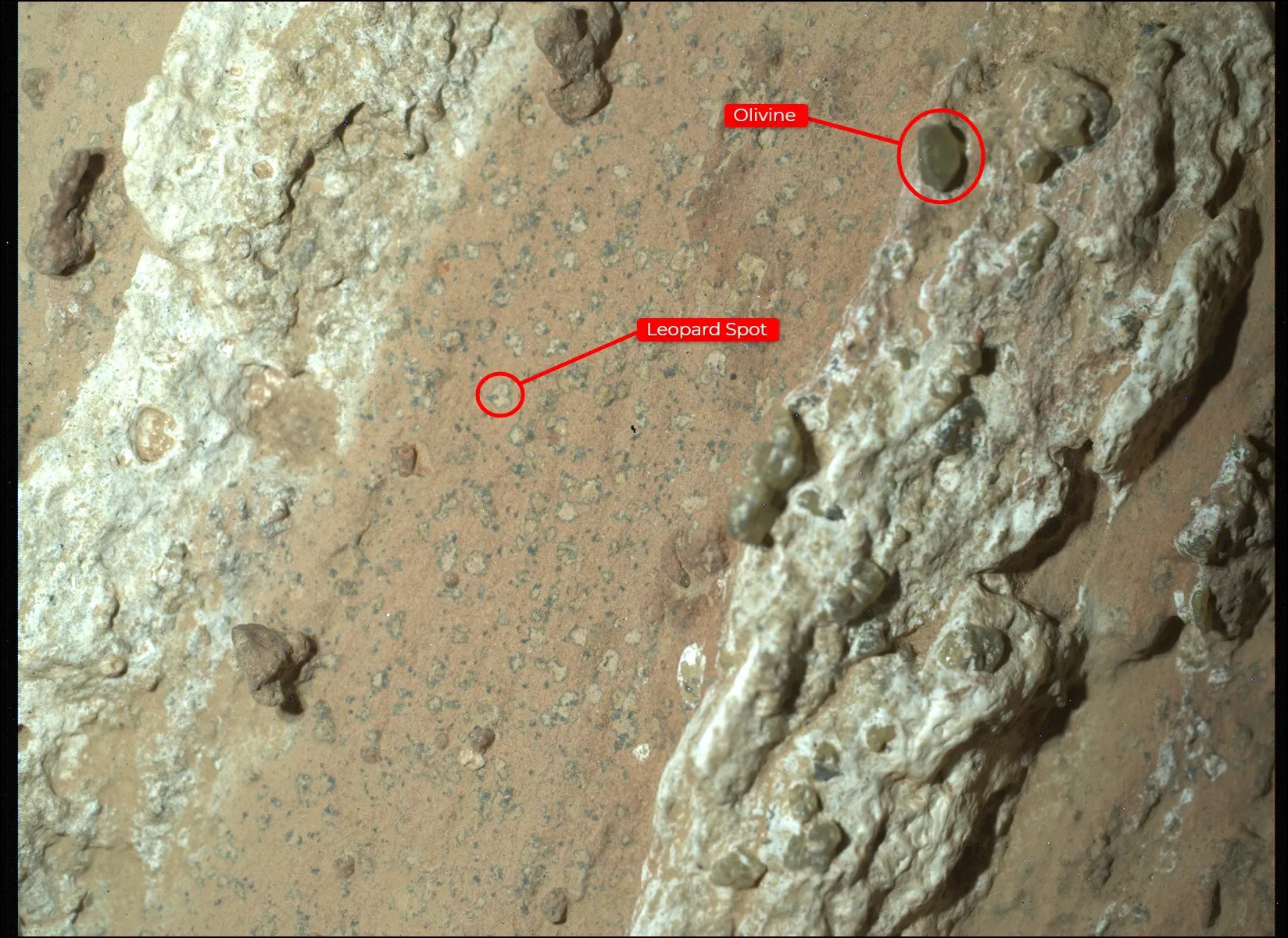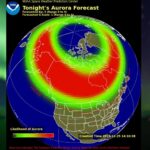Now Reading: Astronomers find 2 galaxies linked by a huge gas bridge
-
01
Astronomers find 2 galaxies linked by a huge gas bridge
Astronomers find 2 galaxies linked by a huge gas bridge
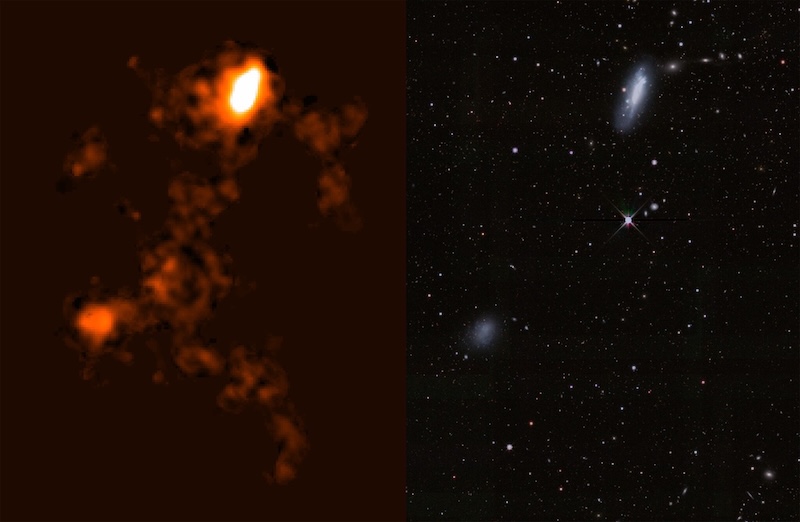
This video, provided by the International Center for Radio Astronomy Research (ICRAR), features the lead investigator of this study, Lister Staveley-Smith of the University of Western Australia. He provides an overview of the discovery of 2 dwarf galaxies linked by a large hydrogen bridge.
- Astronomers discovered a massive 185,000-light-year-long hydrogen gas bridge connecting two dwarf galaxies.
- This bridge, along with a very long gas tail, is thought to have formed due to gravitational interactions between the dwarf galaxies and the influence of the nearby Virgo galaxy cluster.
- The discovery, made using the ASKAP radio telescope array, helps scientists better understand galaxy evolution, star formation and gas dynamics between galaxies.
2 galaxies linked by a huge hydrogen gas bridge
Astronomers have discovered a colossal hydrogen gas bridge between two small galaxies. It spans 185,000 light-years, or nearly twice the width of our large spiral Milky Way galaxy. Plus, this bridge is connected to a previously observed gas tail, which stretches over 1.6 million light-years! These extraordinary features are thought to have resulted from an interaction between two small galaxies, NGC 4532 and DDO 137, located some 53 million light-years from Earth.
In addition, these galaxies lie in the outskirts of the Virgo galaxy cluster, a large collection of over 1,300 galaxies. It’s believed that location also influenced the characteristics of the gas bridge between the galaxies.
The researchers published their study in the peer-reviewed journal Monthly Notices of the Royal Astronomical Society on September 23, 2025.
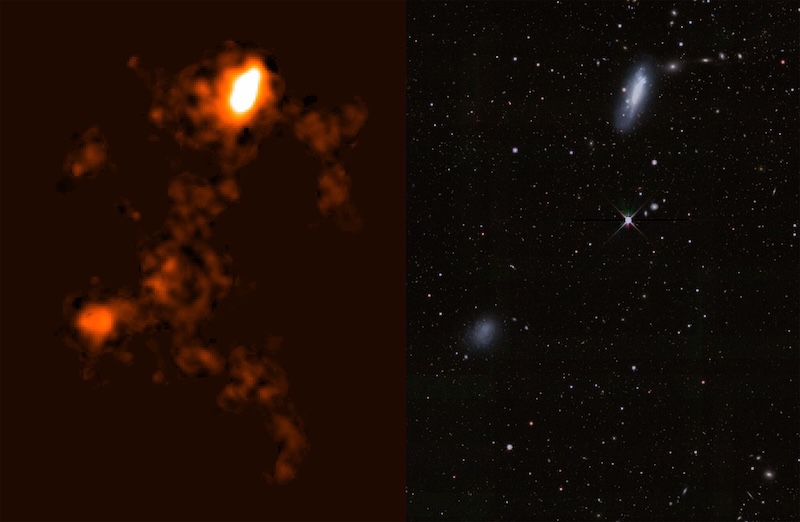
A remarkable interaction between 2 dwarf galaxies
A dwarf galaxy is a small galaxy, with stars numbering from about a thousand to a few billion. In comparison, the Milky Way has somewhere between 100 to 400 billion stars.
NGC 4532 and DDO 137, both dwarf galaxies, once passed in close proximity to each other. As the galaxies moved away, their gravitational tugs pulled out hydrogen gas. As a result, the newly discovered hydrogen gas bridge, 185,000 light-years long, was formed.
There’s also a hydrogen tail extending from this gas bridge, 1.6 million light-years long. Astronomers first detected it more than 30 years ago with the Arecibo radio telescope. Now, the new gas-bridge observations have helped astronomers better understand how that tail formed.
This study, according to the paper’s lead author Lister Staveley-Smith of the University of Western Australia, is an important step in understanding galaxy interactions. He said:
Our modeling showed that the tidal forces acting between these galaxies, alongside their proximity to the massive Virgo cluster of galaxies, played a crucial role in the gas dynamics we observed.
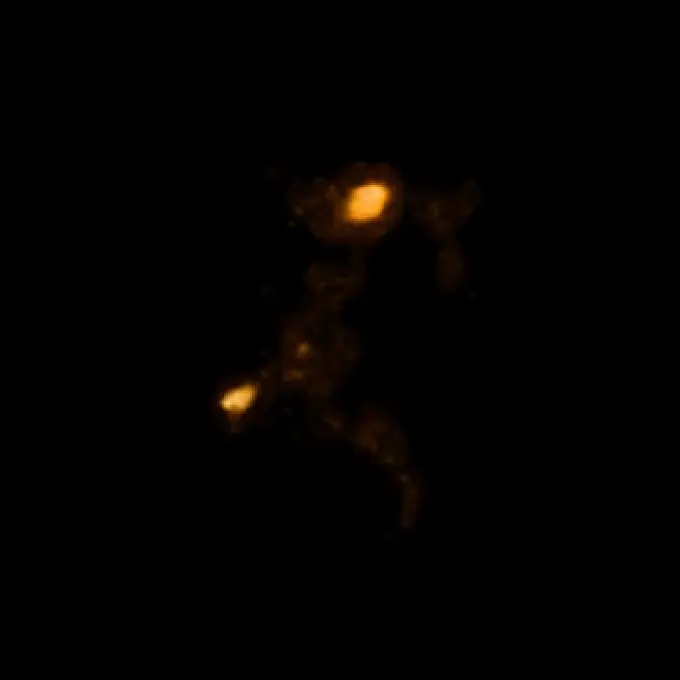
Role of the Virgo Cluster in creating the gas bridge and tail
NGC 4532 and DDO 137 lie in the outskirts of the Virgo galaxy cluster. This is a large collection of galaxies, numbering about 1,300 members.
The medium between those galaxies is a rarefied plasma. That’s ionized gases in the form of positive ions and electrons, distributed at a low density. In and around the Virgo cluster, as in many other galaxy clusters, this diffuse plasma is hot.
Staveley-Smith explained:
As the galaxies rotated around each other and moved toward the hot gas cloud surrounding the Virgo cluster, which was 200 times hotter than the sun’s surface, they experienced what is known as ram pressure, which stripped and heated the gas from the galaxies.
The process is akin to atmospheric burn-up when a satellite re-enters the Earth’s upper atmosphere but has extended over a period of a billion years.
The density of electrons and the speed at which galaxies are falling into the hot gas cloud are enough to explain why so much gas has been pulled away from the galaxies and into the bridge and surrounding areas.
Radio observations reveal the distribution of hydrogen gas
Astronomers made this discovery using an array of radio telescopes called ASKAP. That’s an acronym for Australian Square Kilometer Array Pathfinder, located in Western Australia.
Astronomers are using ASKAP to map the distribution of neutral hydrogen gas across almost half of the southern sky. This radio telescope array is sensitive enough to detect hydrogen in galaxies as far as a billion light-years away.
The hydrogen survey is important because hydrogen is essential for the formation of stars. But a lot of hydrogen lies in the space between galaxies. Therefore, astronomers are trying to understand the flow of hydrogen in and out of galaxies. This is essential for understanding how galaxies evolve over billions of years.
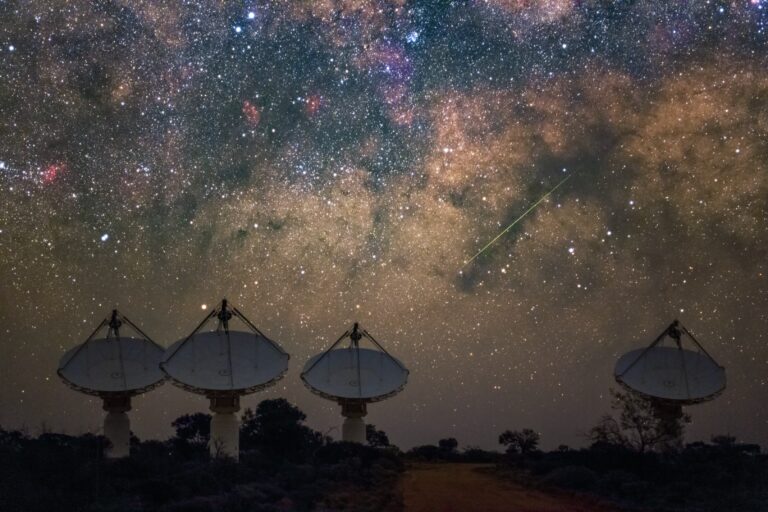
Similarities to our own Milky Way and Magellanic Clouds
Staveley-Smith noted that the NGC 4532 and DDO 137 hydrogen gas system has some resemblance to our own Milky Way galaxy and its two satellite dwarf galaxies, the Small and Large Magellanic Clouds. In fact, there is a gas bridge, 70,000 light-years long, connecting the two Magellanic Clouds.
He commented:
Understanding these gas bridges and their dynamics provides critical insights into how galaxies evolve over time, how galactic gas is redistributed, and the varying conditions under which galaxies may or may not form stars.
This contributes to our broader understanding of the most massive structures in the universe and their life cycles, which helps us grasp more about their vast complexities and history of star formation.
Bottom line: Astronomers have discovered two dwarf galaxies linked by a colossal hydrogen gas bridge, which spans an enormous 185,000 light-years.
The post Astronomers find 2 galaxies linked by a huge gas bridge first appeared on EarthSky.
Stay Informed With the Latest & Most Important News
-
 012024 in Review: Highlights from NASA in Silicon Valley
012024 in Review: Highlights from NASA in Silicon Valley -
 02Panasonic Leica Summilux DG 15mm f/1.7 ASPH review
02Panasonic Leica Summilux DG 15mm f/1.7 ASPH review -
 03How New NASA, India Earth Satellite NISAR Will See Earth
03How New NASA, India Earth Satellite NISAR Will See Earth -
 04And Thus Begins A New Year For Life On Earth
04And Thus Begins A New Year For Life On Earth -
 05Astronomy Activation Ambassadors: A New Era
05Astronomy Activation Ambassadors: A New Era -
06SpaceX launch surge helps set new global launch record in 2024
-
 07Space Force plans new ‘Futures Command’ amid pressure to speed up modernization
07Space Force plans new ‘Futures Command’ amid pressure to speed up modernization












